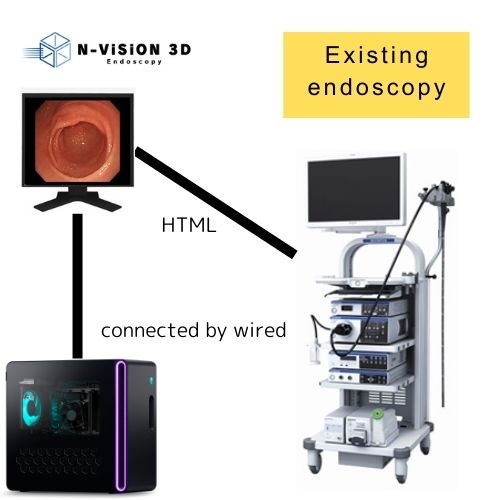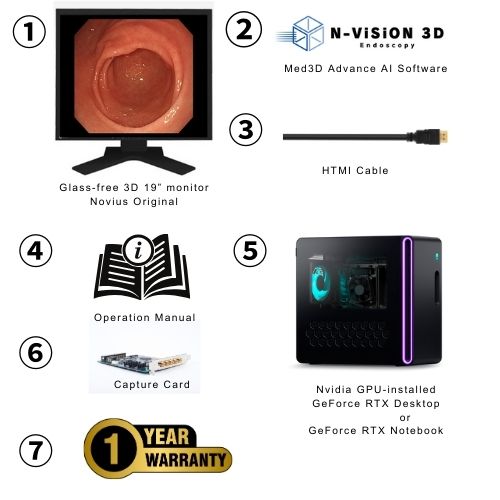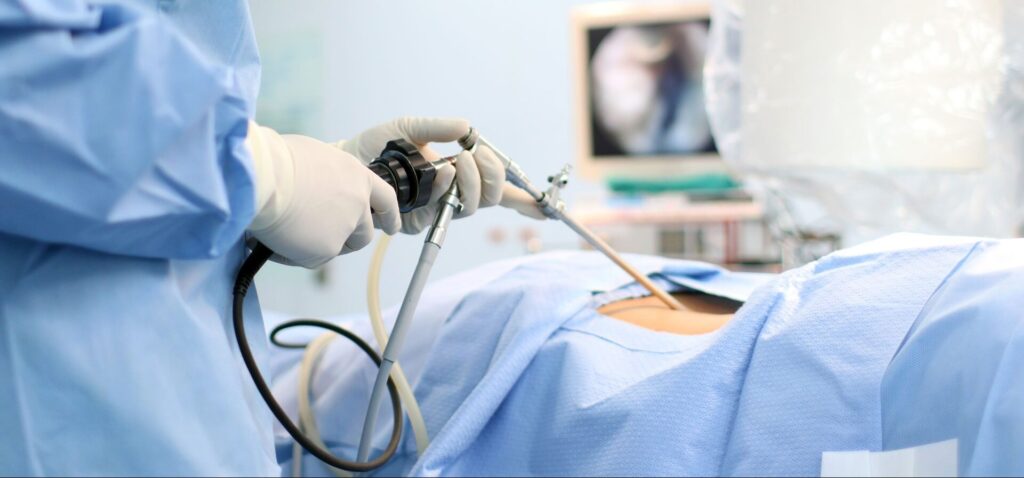Glass-Free 2D-3D Imaging System
New perspective on endoscopy and surgery.
World's first 3D medical image conversion technology
Novius 3D imaging system does NOT need any glasses-on.
It works with glass-free 3D monitor

and does not provide diagnostic nor clinical decision support nor interpreting medical data.
Installation of Endoscopic 3D on existing any endoscopy is easy. It can be done by a doctor or an assistant.
New software installation or additional hardware peripherals or modifications by the manufacturer are NOT necessary at all.


PC image is Example
Package includes
1) Glass-free 3D 19”/27″ Monitor
2) Med3D Advance AI Software
3) HTMI Cable
4) Operation Manual
5) Nvidia GeForce RTX PC
6) Capture Card
7)One-year warranty
Technology Features
New perspective on endoscopy and surgery.
1)Improve diagnostic accuracy 2)Reduction of surgical time 3)Improve learning curve
You can see "All Glass-Free"
NOVIUS Real-time conversion time (2D to 3D conversion time) is the fastest in the world. The conversion time is approximately 0.08 seconds (as of July 10, 2022) by developing a proprietary AI 3D algorithm. (Measurement environment: 24-inch lenticular display and 17-inch LFD is likely faster)
N-VISION3D is Non-Medical Device (Programmed Medical Device)
This technology has been confirmed by the Ministry of Health in Japan, Labor and Welfare as a programmed medical device and a non-medical device. It is intended for use in the medical field as an AI image support system, or in the case of this technology, for data display, storage, and transfer processing.
Simultaneous viewing by multiple audiences
We can not use eye-tracking technology.and Glassless 3D output makes it possible to share images with glassless eye and multiple people without wearing a device.
2D->3D Conversion time is 0.08sec
NOVIUS Real-time conversion time (2D to 3D conversion time) is the fastest in the world. The conversion time is approximately 0.08 seconds (as of July 10, 2022) by developing a proprietary AI 3D algorithm. (Measurement environment: 24-inch lenticular display and 17-inch LFD is likely faster)
Supports post-Covid19 as a non-contact tool
Create parallax from monocular or single lens
Glass-Free style, No VR goggles, No converters are needed, so people around you can share what is being displayed on the glass-free 3D display.
Existing 2D monocular endoscope cameras can be used

Easy connection to existing microscopes, 2D-endoscopes,
Pull images from existing endoscope equipment (such as existing endoscope equipment) via HDMI, etc., and install N-VISION’s AI software on the NVIDIA GPU-equipped equipment. Existing images can be streamed to the device to view 3D-enhanced images in real time. The display is a naked-eye 3D monitor. The connection method is basically HDMI, but depending on the manufacturer of the endoscope system, it may not be possible to output images.

